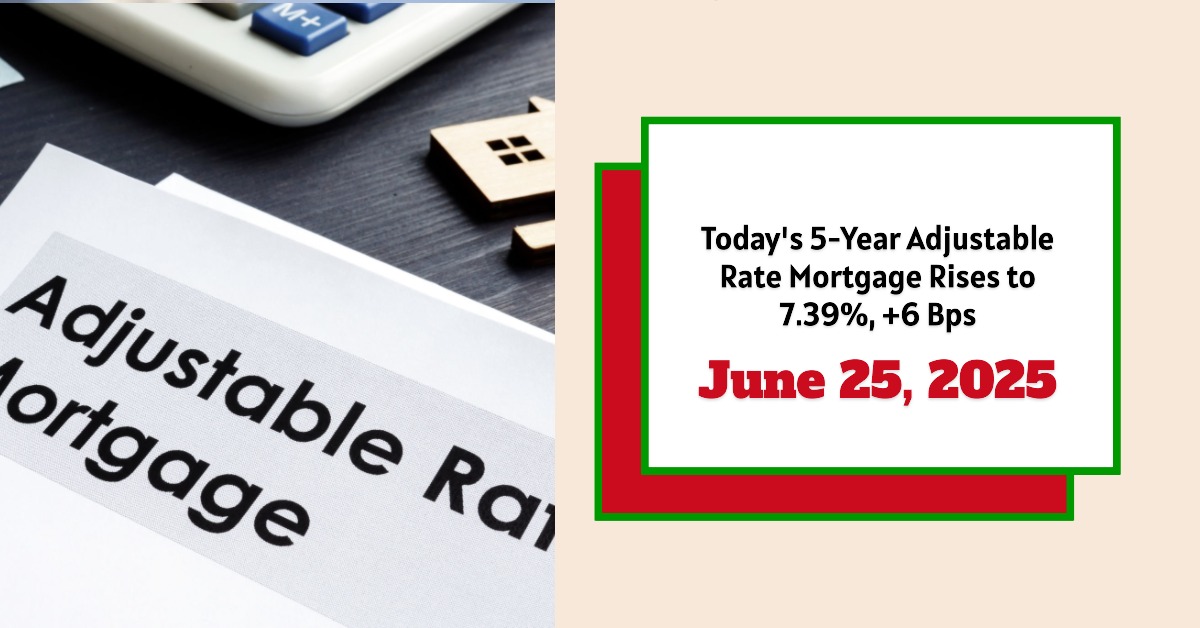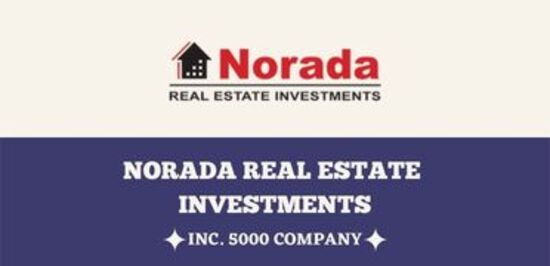Are you thinking about buying a home or refinancing your mortgage? It's essential to stay up-to-date on the latest mortgage rate trends. As of today, June 25, 2025, the national average 5-year Adjustable Rate Mortgage (ARM) has risen to 7.39%. This increase of 6 basis points from 7.33% marks a notable shift in the market, and I'll break down what it means for you, whether you're a first-time buyer or a seasoned investor.
Today's 5-Year Adjustable Rate Mortgage Soars at 7.39% – June 25, 2025: What You Need to Know
With fluctuating interest rates in the market, understanding the different types of mortgages and their implications is vital. It's no secret that navigating the housing market can be confusing, and nobody wants to be swindled when making a dream purchase. So, let’s take a deep dive to gain clarity on what these numbers really mean!
Mortgage Rate Snapshot: June 25, 2025
Before going forward, it's important to understand the current mortgage market at a high level for proper context. Here's a quick look at the latest average mortgage rates from Zillow as of June 25, 2025:
- 30-Year Fixed Rate: 6.81% (down 2 basis points from yesterday)
- 15-Year Fixed Rate: 5.87% (stable)
- 5-Year ARM: 7.39% (up 6 basis points)
Why the Focus on the 5-Year ARM?
You might be wondering, “Why are we focusing on the 5-year ARM in particular?”. Well, ARMs can be a strategic choice for certain homebuyers, especially when interest rates are high. But as we will soon see, they come with a distinct set of advantages and disadvantages. Understanding the nuances of ARMs can save you money and help you make a smarter financial decision when choosing a mortgage.
Understanding Adjustable Rate Mortgages (ARMs)
What is an ARM?
An Adjustable Rate Mortgage (ARM) is a type of home loan where the interest rate is not fixed for the entire loan term. Instead, it starts with an initial fixed-rate period, after which the interest rate can adjust periodically based on a benchmark index, like the Secured Overnight Financing Rate (SOFR) plus a margin.
How does a 5-Year ARM work?
A 5-year ARM has a fixed interest rate for the first five years of the loan. After that, the interest rate adjusts annually. If you get a 5-year ARM, for the initial 5 years, your interest rate will be locked. After this initial period, the rate will typically adjust once per year based on market conditions. This means your monthly mortgage payment could go up or down depending on where interest rates are at that time.
Initial Fixed Rate: As of today, June 25, 2025, the national average for a 5-year ARM is 7.39%.
Adjustment Period: After the first five years, the interest rate will adjust. The frequency of these adjustments (how often they happen) is defined in the mortgage agreement.
Index and Margin: The interest rate on an ARM is calculated by adding a margin to a specific index. The index is a benchmark rate that reflects prevailing interest rates (e.g., SOFR), and the margin is a fixed percentage point that the lender adds. The margin and index determine how much your rate adjusts.
Rate Caps: ARMs usually come with rate caps, which put a limit on how much the interest rate can increase. There are typically two types of caps:
- Periodic Cap: Limits how much the rate can increase in a single adjustment period.
- Lifetime Cap: Limits how much the rate can increase over the entire loan term.
These caps are designed to protect borrowers from excessively high-rate increases.
Why the Increase in 5-Year ARM Rates?
Several factors could be contributing to the rise in 5-year ARM rates. Here's my expert perspective:
- Inflation: Persistent inflation can drive up interest rates across the board. As the cost of goods and services rises, lenders may increase rates to protect their returns. Inflation eats into money, so you can't expect them to keep lending at the same rate.
- Economic Growth: A strong economy often leads to higher interest rates. When the economy is growing, demand for loans increases, driving up rates.
- Federal Reserve Policy: All eyes are always on the Fed. The Federal Reserve's monetary policy decisions have a direct impact on interest rates. If the Fed raises the federal funds rate, mortgage rates typically follow suit.
- Market Expectations: Interest rates are forward-looking, and market expectations about future economic conditions can influence current rates.
ARMs vs. Fixed-Rate Mortgages: Which is Right for You?
The big question is always: Which is superior, an ARM or a fixed-rate mortgage? Let's compare ARMs to traditional fixed-rate mortgages to help you decide which one is right for you:
| Feature | Adjustable Rate Mortgage (ARM) | Fixed-Rate Mortgage |
|---|---|---|
| Interest Rate | Adjustable | Fixed |
| Initial Rate | Often lower than fixed rates | Higher than ARM |
| Rate Stability | Unstable | Stable |
| Monthly Payments | Potentially fluctuating | Predictable |
| Risk | Higher | Lower |
| Best For | Short-term homeowners | Long-term homeowners |
When an ARM Might Be a Good Choice:
- Short-Term Homeownership: If you only plan to stay in your home for a few years (less than 5 years), an ARM might make sense. You can take advantage of the lower initial rate and potentially sell the home before the rate adjusts.
- Expectation of Lower Rates: If you believe interest rates will decrease in the future, an ARM could be beneficial. As rates fall, your mortgage payment could decrease.
- Financial Flexibility: If you anticipate an increase in income in the future that will enable you to afford potentially higher mortgage payments.
- You're comfortable with risk: You'll need to have the mental fortitude to handle market swings, be it for the better or worse.
However, I tell my friends that it may be a bad idea if they are not planning to stay in the house for a short amount of time. The danger of a higher interest rate is very real.
Recommended Read:
5-Year Adjustable Rate Mortgage Analysis for June 24, 2025?
Fixed vs. Adjustable Rate Mortgage in 2025: Which is Best for You
When a Fixed-Rate Mortgage Might Be a Better Choice:
- Long-Term Homeownership: If you plan to stay in your home for many years, a fixed-rate mortgage offers stability and predictability.
- Risk Aversion: If you prefer the peace of mind of knowing your mortgage payment will not change, a fixed-rate mortgage is the way to go.
- Rising Interest Rate Environment: If you believe interest rates will rise, locking in a fixed rate now can save you money in the long run.
Current Mortgage Rate Trends
Looking more broadly, here's how other types of mortgages are performing (based on the data from Zillow):
| Loan Program | Rate | 1W Change | APR | 1W Change |
|---|---|---|---|---|
| 30-Year Fixed Rate | 6.82% | down 0.10% | 7.35% | down 0.02% |
| 15-Year Fixed Rate | 5.87% | down 0.09% | 6.24% | down 0.03% |
| 5-Year ARM | 7.39% | up 0.19% | 7.99% | up 0.19% |
How to Navigate the Current Market
Navigating the mortgage market requires careful planning and consideration. Here's my advice:
- Shop Around: Get quotes from multiple lenders to ensure you're getting the best rate and terms.
- Understand the Terms: Read the fine print and fully understand the terms of your mortgage, including any fees or penalties.
- Consider Your Financial Situation: Assess your financial situation, including your income, debt, and credit score, to determine what you can realistically afford.
- Work with a Professional: Consult with a mortgage broker or financial advisor to get personalized advice tailored to your needs and circumstances.
The Bottom Line
The increase in the 5-year ARM rate to 7.39% on June 25, 2025, is a reminder of the dynamic nature of the mortgage market. While ARMs can be a strategic choice for some, it's essential to weigh the risks and benefits carefully. By staying informed and working with qualified professionals, you can make confident decisions that align with your financial goals.
Is the market still hot, you ask? Well in my experience, I would not compare current times to what we've seen in the past few years (2020-2023) where rates were extremely low and demand was extremely high. Instead, it's quite close if you use pre-pandemic times as a base.
Capitalize on ARM Rates Before They Rise Even Higher
With fluctuating adjustable-rate mortgages (ARMs), savvy investors are exploring flexible financing options to maximize returns.
Norada offers a curated selection of ready-to-rent properties in top markets, helping you capitalize on current mortgage trends and build long-term wealth.
HOT NEW LISTINGS JUST ADDED!
Connect with an investment counselor today (No Obligation):
(800) 611-3060
Also Read:
- Will Mortgage Rates Go Down in 2025: Morgan Stanley's Forecast
- Expect High Mortgage Rates Until 2026: Fannie Mae's 2-Year Forecast
- Mortgage Rate Predictions 2025 from 4 Leading Housing Experts
- Mortgage Rates Forecast for the Next 3 Years: 2025 to 2027
- Will Mortgage Rates Ever Be 3% Again in the Future?
- Mortgage Rates Predictions for Next 2 Years
- Mortgage Rate Predictions for Next 5 Years
- Mortgage Rate Predictions: Why 2% and 3% Rates are Out of Reach
- How Lower Mortgage Rates Can Save You Thousands?
- How to Get a Low Mortgage Interest Rate?
- Will Mortgage Rates Ever Be 4% Again?



